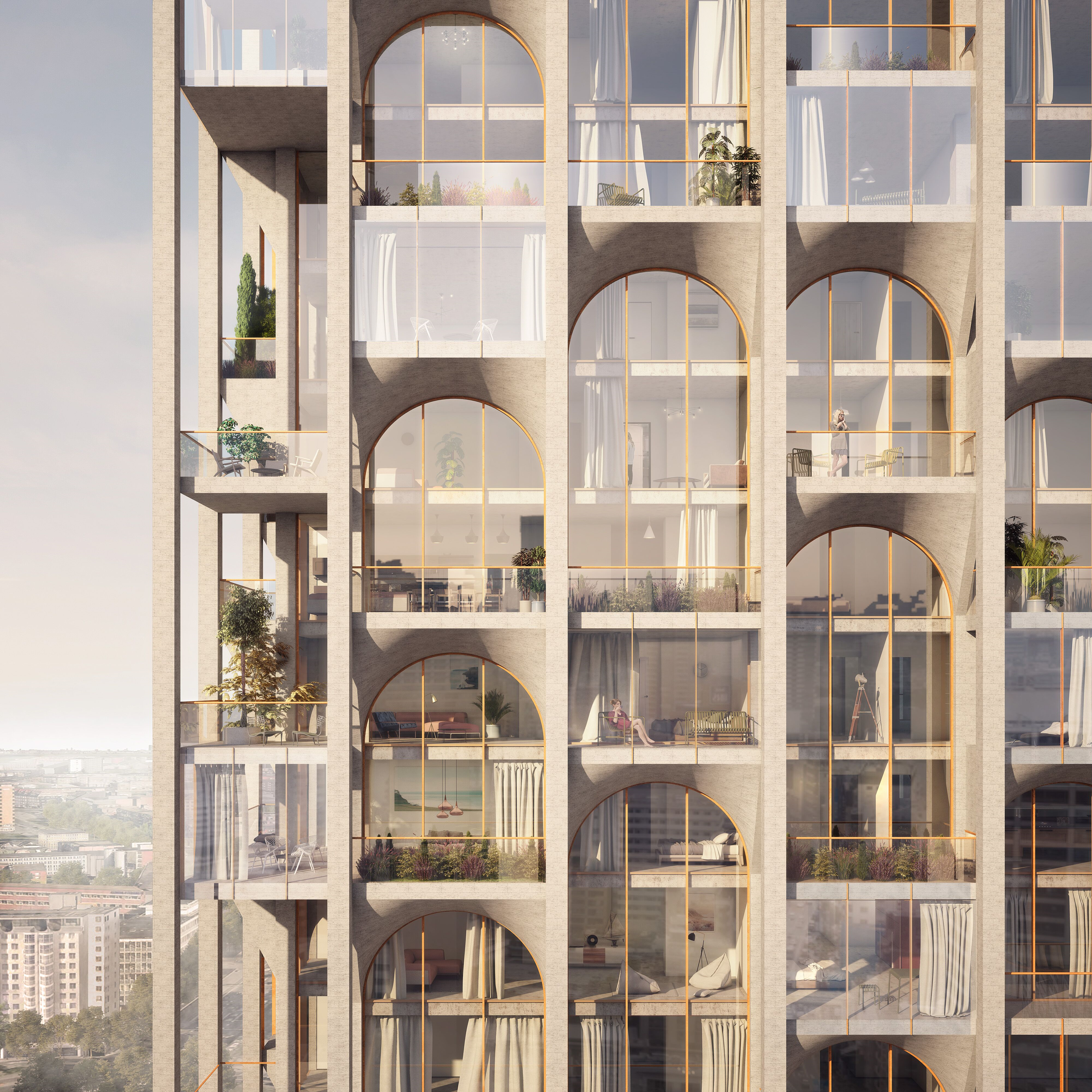Problem: 15,000 empty residential lots in the city of Chicago.
Solution: A re-imagined model for inner-city, urban ownership.
Result: Private living units, affordable because of their range in size, supported by adjacent areas of collective space where living, dining, and socializing take place.
It might sound like an MBA formula for success, but in fact it’s a social treatise from the architects at Krueck + Sexton. It’s called “Chicago Boogie-Woogie,” and it’s on display now at the Chicago Architecture Biennial through Jan. 3, 2016.
“What we looked at was how to take five adjacent empty lots and develop them,” says Tom Jacobs, architect at Krueck + Sexton. “It opens up the possibilities dramatically, especially on streets running east to west, where the architectural model is wrong because the lots are so narrow.”
As in 25 feet wide, 125 feet deep, with five feet between conventional residential construction. “Our first move was to turn the buildings 90 degree so they’re exposed to daylight and views out to the street or the back yard,” he says. “The architecture is better on almost every level.”
Three parallel bars for mixed use – all designed for self-sufficiency in an urban core – are organized for retail and service at the ground level, and differing square footage for living spaces above.
“The front structure is for one bedroom units, and then collective space – a porch shared by all owners,” he says. “The northernmost bar is an inversion of that, with the private unit basically a studio, with a bed, table and chair, and an adjacent community space for cooking, dining, living, and study.”
They’re address the issues of isolation, poverty and crime in the inner city – and suggest a new kind of community there. Moreover, they take their cues from the tiny home movement. The front unit consists of eight residential units at 300 square feet each; the middle has six at 200 square feet, and the rear has a 15 units with 100 square feet each.
And they offer a solution to a tough urban issue from a group of socially conscious architects. “How could you not be, in the kind of world we live in? Jacobs asks. “The only way to make sense of the political dysfunction we live in is to turn it around completely and try to come up with ideas and models that are a good faith effort to address a problem.”
Surely, Chicago leadership has taken note.
[slideshow id=1509]

